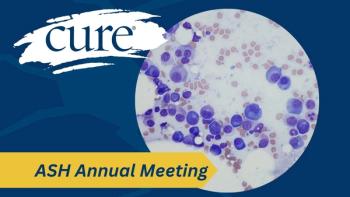
Microsurgery: a Viable Option for Improving Lymphatic Flow in Cancer Survivors
The routine removal of sentinel nodes during surgery for breast cancer may not be necessary, and can contribute to painful lymphedema.
“You have cancer and you need surgery. Life as you know it will never be the same.”
In a matter of minutes, everything changed. I was in shock. I was dumbfounded, but this was real. When the breast surgeon met with me, we discussed my upcoming surgery. I was to have bilateral mastectomies. She went into great detail about the procedure she’d use to remove both of my breasts. I felt confident she’d do the best job she could to remove all the cancer in my body. She was young. She was a top-notch surgeon. She assured me she’d also check my sentinel lymph nodes after she removed my breasts. As we sat in her office, after the staff had left for the day, she talked to me about my body. She said those nodes would be the first ones to show evidence of cancer if it had traveled outside my breast, but that’s all I knew. I didn’t know taking those lymph nodes out would haunt me for years to come. I didn’t realize how important they were.
When a patient is diagnosed with breast cancer, doctors often inspect the sentinel lymphatic node for possible cancer cells. When this process is performed, a radioactive solution or a harmless blue dye is injected near the cancerous tumor. The solution or dye travels into the lymphatic system and is then checked by a surgeon while the patient is under general anesthesia. A biopsy is usually performed and if cancer cells are present, the sentinel node will be removed. If necessary, the surgeon will remove more lymph nodes in an attempt to completely remove all cancer cells. When these lymph nodes are removed, they often cause a disruption in the flow of lymphatic fluid. This disruption in the normal flow of lymphatic fluid causes the patient to develop a condition known as lymphedema. Lymphedema is a condition where excess lymphatic fluid collects in tissue. This causes swelling in various parts of the body but is most usually found in the arms, legs, breast area or chest wall. Lymphedema can occur shortly after surgery to remove breast cancer or even months to years later. The greater the number of nodes removed, the higher the risk of developing lymphedema. Early diagnosis and treatment of lymphedema can help manage symptoms and reduce the risk of the condition progressing. When lymphedema is left untreated, it may lead to severe infections, decreased mobility, and other complications. Lymphedema is not curable but with proper treatment it is manageable. The goal of treatment is to manage the symptoms, reduce swelling or halt its progression. Lymphedema treatment plans are tailored according to each patient’s needs. Commonly used treatment regimens include wrapping, compression garments, exercise, manual lymph drainage (a type of massage therapy) or combinations of these therapies.
Recently, there have been studies done on more severe cases of lymphedema where the standard modes of treatment are ineffective. In an
Any patient suffering from lymphedema is a potential candidate for microsurgical procedures. “The best results, according to the
Since there are so few institutions offering surgery for lymphedema, no formal screening system has been established for choosing patients most suited for these surgeries. Without a proper way to evaluate patients, there are probably many who would benefit from the surgical procedures but are left without those options. The Lymphovenous bypass is a procedure where the surgeon bisects and routes an obstructed lymphatic vessel with a healthy vein. The vein transports the lymphatic fluid effectively throughout the body where it can be absorbed. The vascularized lymph node transfer is a more invasive surgery. This procedure involves harvesting healthy lymph nodes from unaffected areas of the body such as the groin or abdomen. “These lymph nodes are moved with an intact blood supply, an artery and a vein that can be anastomosed to the recipient site,” Dr. Hanasono said. “The transferred nodes then appear to absorb and collect the lymphatic fluid that was being blocked.”
As a breast cancer survivor suffering with lymphedema, these advancements in medical technology are exciting. I have experienced having my upper arms wrapped tightly with medical gauze. I’ve had manual lymphatic compression therapies performed on me. I’ve worn compression sleeves and gauntlets, and I’m currently using a recirculating compression pump to alleviate the pain and swelling from lymphedema. Knowing there’s no cure for lymphedema and it may possibly get worse in the years to come, I’m considering talking to my doctor about the possibility of microsurgery. It would be wonderful to have a permanent solution to a painful problem.
I wish I’d known about the possibility of developing lymphedema before having my breasts removed. If I’d had more information, I may not have agreed to have had my sentinel nodes removed. In a recent
It is my hope that doctors will continue to research this area and do further testing to determine whether sentinel lymph node removal is necessary. Lymphedema is a lifelong condition. No one knows when or if they will develop it but removal of lymph nodes has been proven to contribute to the development of lymphedema. If there is a way to reduce that risk significantly, shouldn’t we try to find it?





